Socioeconomic Impacts of Harmful Algal Blooms
The School of Marine & Environmental Affairs is excited to share the latest on the Capstone Project; Socioeconomic Impacts of Harmful Algal Blooms.
The social, economic and cultural impacts of harmful algal blooms (HABs) in the U.S. are not well documented. The human toll of HABs extends far beyond the lost fisheries landings and tourism-related income that are commonly used to assess impacts. Profound hardship may result from economic, social, and cultural disruption long after the bloom has dissipated.
Starting in May 2015, a massive toxic HAB affected the U.S. west coast from central California to southern Alaska, resulting in significant impacts to coastal resources and marine life. Because of unsafe levels of HAB toxins in seafood, coastwide harvest closures of shellfish (including Dungeness crab, rock crab and razor clams) and fish (sardines and anchovies) were enacted in summer 2015, cutting off the economic lifeline for fishery-dependent communities.
Our group of graduate students from the University of Washington, School of Marine and Environmental Affairs, seeks to better understand the human dimensions of HABs. By conducting interviews in coastal communities dependent on resources that are affected by toxic HABs, we aim to assess community resilience. Our goal is to create a framework that will capture the specific needs of coastal communities in the wake of HAB events to ultimately inform future actions.
Social Science Lead
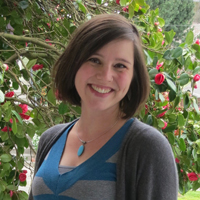 Stacia Dreyer, PhD, is the Social Science Lead on the project, overseeing the qualitative research. She is a mixed-methods researcher, using quantitative and qualitative methods to better understand human dimensions of environmental issues such as HAB’s.
Stacia Dreyer, PhD, is the Social Science Lead on the project, overseeing the qualitative research. She is a mixed-methods researcher, using quantitative and qualitative methods to better understand human dimensions of environmental issues such as HAB’s.
Capstone Graduate Students
 Kathryn Blair was a fisheries observer with the National Marine Fisheries Service (NMFS) in Alaska, Washington, and Oregon. While living and working in a small fishing community, she became interested in the resiliency of these towns, especially when faced with environmental challenges like harmful algal blooms. She is currently an intern with NMFS in the Sustainable Fisheries Division.
Kathryn Blair was a fisheries observer with the National Marine Fisheries Service (NMFS) in Alaska, Washington, and Oregon. While living and working in a small fishing community, she became interested in the resiliency of these towns, especially when faced with environmental challenges like harmful algal blooms. She is currently an intern with NMFS in the Sustainable Fisheries Division.
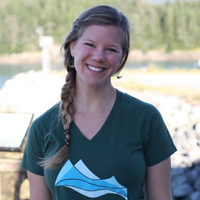 Amy Brodbeck has spent the last five years communicating science to the public, both as a whale watching naturalist in Alaska and Hawaii and as a park ranger in Glacier Bay National Park. With a degree in biology, her fieldwork experience includes working on a fisheries restoration project in Yellowstone National Park, fire regeneration surveys in northern California, and assisting scientists at a marine field station in Chilean Patagonia. She is interested in the human dimensions of environmental change, including the impacts of harmful algal blooms on coastal communities.
Amy Brodbeck has spent the last five years communicating science to the public, both as a whale watching naturalist in Alaska and Hawaii and as a park ranger in Glacier Bay National Park. With a degree in biology, her fieldwork experience includes working on a fisheries restoration project in Yellowstone National Park, fire regeneration surveys in northern California, and assisting scientists at a marine field station in Chilean Patagonia. She is interested in the human dimensions of environmental change, including the impacts of harmful algal blooms on coastal communities.
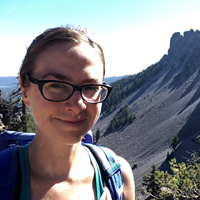 Sara Brostrom is interested in researching the social and economic impacts of harmful algal blooms on coastal communities. Previous to returning to graduate school, Sara was a public school science teacher in Baltimore and Seattle for five years.
Sara Brostrom is interested in researching the social and economic impacts of harmful algal blooms on coastal communities. Previous to returning to graduate school, Sara was a public school science teacher in Baltimore and Seattle for five years.
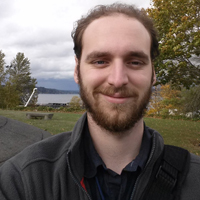 Michael Cline earned his bachelors in marine science while living on beaches in the southeastern United States. During that time, he became increasingly interested in the interplay between people and the coast, and how human activity can affect planktonic communities in nearshore waters. Harmful algal blooms were a natural part of this relationship, and Michael is excited to use the analytical and quantitative skills he developed studying these events to better inform public policy that directly affects coastal communities.
Michael Cline earned his bachelors in marine science while living on beaches in the southeastern United States. During that time, he became increasingly interested in the interplay between people and the coast, and how human activity can affect planktonic communities in nearshore waters. Harmful algal blooms were a natural part of this relationship, and Michael is excited to use the analytical and quantitative skills he developed studying these events to better inform public policy that directly affects coastal communities.
 Jerilyn Coberly earned a bachelor’s degree in Earth and Space Sciences: Geology at the University of Washington. Her undergraduate work with the Puget Sound Foram Research Project focused on how monitoring marine microorganisms could help track the health of Puget Sound. This project led to an interest in how science can inform policy and vice versa. Now, Jerilyn is excited to apply her skills to another project with wide implications for policy, economics, public health, and cooperation between private and public organizations.
Jerilyn Coberly earned a bachelor’s degree in Earth and Space Sciences: Geology at the University of Washington. Her undergraduate work with the Puget Sound Foram Research Project focused on how monitoring marine microorganisms could help track the health of Puget Sound. This project led to an interest in how science can inform policy and vice versa. Now, Jerilyn is excited to apply her skills to another project with wide implications for policy, economics, public health, and cooperation between private and public organizations.
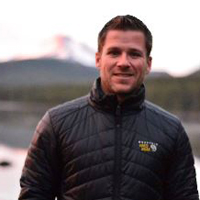 Scott McGrew is an Active Duty Officer in the United States Coast Guard currently assigned to the University of Washington. Most recently, he served as Commanding Officer of Station Cape Disappointment at the mouth of the Columbia River. At Cape Disappointment, he oversaw search and rescue, law enforcement, and port security on one of the busiest and most treacherous waterways in America. His assignments over the last 18 years have been in small coastal towns and is what sparked his interest in this project. He is committed to maintaining the social fabric of fishing communities, while working collaboratively to develop strategies to build resilience to climate change, natural disasters, and changes in fisheries management regimes.
Scott McGrew is an Active Duty Officer in the United States Coast Guard currently assigned to the University of Washington. Most recently, he served as Commanding Officer of Station Cape Disappointment at the mouth of the Columbia River. At Cape Disappointment, he oversaw search and rescue, law enforcement, and port security on one of the busiest and most treacherous waterways in America. His assignments over the last 18 years have been in small coastal towns and is what sparked his interest in this project. He is committed to maintaining the social fabric of fishing communities, while working collaboratively to develop strategies to build resilience to climate change, natural disasters, and changes in fisheries management regimes.
Contact Us
For more information about the study, please contact us at SMEAgrad@uw.edu.